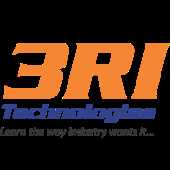First, the money speaks. Python is the preferred language for the vast majority of qualified students and programmers. The large group of programmers, future and present, want to know what to learn to get real jobs. For most people, it makes little sense to enter a field with knowledge of something not needed. And Python is definitely in demand today. As the number of data science students and programmers increases, along with a growing number of Python recommendations for use, the number of Python enthusiasts will not decrease.
Secondly, Python is very versatile. Python is a multipurpose language used for various activities such as web development and data science. How can we explain the current growth of Python in these fields? We could observe the traffic growth of the most popular Python packages. The code collection and stack from various open source repositories are developed by people (still in progress) to continually improve existing methods.
When you do a quick Google search on "most popular programming languages" or similar topics, Python is certainly still in the top 5 lists. Now, it wasn't always so high on the list, looking ahead of 2012, Python was easily a very common language that wasn't considered very often. Seven years later, Python's popularity has grown exponentially, which clearly demonstrates that Python's development is the fastest. In this article, I will look at the many reasons why Python has suddenly become an emerging trend.
1. Python syntax
Python is a programming language that emphasizes the readability and simplicity of code. This allows developers to write programs with fewer lines of code than other commonly needed programming languages. For example, if you compare Java and Python, much of the code reduction comes from the fact that Python cannot use a semicolon. It relies heavily on spaces and indents to distinguish blocks of code from each other. . Python is also a dynamic type language, which means that variable types are known at runtime rather than static compile languages at compile time, which reduces syntax by eliminating the need for type declarations . in the variables. Also, in Python, attribute attributes for objects can be done in fewer lines of code than other programming languages, because you don't have to declare them in advance in the object class.
Now that Python's syntax is so simple, it's a great programming language for beginners who want to start programming because they have the advantage of focusing more on current programming concepts than having to master a program. Perfect syntax while learning. It's also very easy and fast for experienced programmers who already know the concepts to familiarize themselves with Python.
2. Python is a general purpose programming language.
The amount of things a programmer can do with Python is unlimited. A very common Python application develops server-side code for web applications because Python is a very efficient and productive programming language. Other Python applications include game development, task automation scripts, machine learning, artificial intelligence, blockchain, data science, and more. The list was constantly growing.
3. Python has an active community
The Python community is so large and supportive that if you ask any Python-related questions on the Internet, a quick and helpful answer is inevitable. However, now that Pythons have been popular for many years, it is likely that others have already asked the questions we usually have, and all that is needed now is a Google search and the answers are already published. Another useful feature of this community is the frameworks and libraries available to developers. We will discuss this in the next point.
4. Python Frameworks and Libraries Collection
Python has its own collection of standard libraries that make it easy for programmers to perform the basic tasks that all programs need. For example, perform string operations, built-in exceptions, etc. Although, after the last section in the large Python community, this translates into an extensive collection of user-created frames and libraries that further simplify the lives of our software developers. For example, web applications can be developed with Django. Django is a free open source framework that provides many predefined features and significantly reduces the amount of code programmers need to write and enables rapid and efficient development. There are about 100 web development frameworks, so just imagine how much there is for everything else. You can easily find libraries for data analysis, web scraping, game development, user interface building and, again, the list goes on. Over time, this collection will grow steadily and many different Python applications will become more practical for developers




Leave Comment